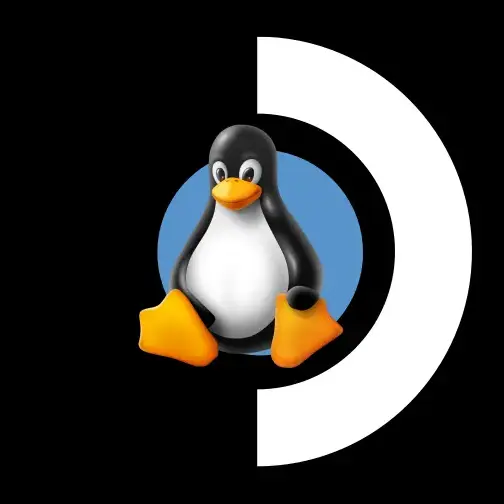

Dev needs to eat.


Dev needs to eat.


Yeah it’s so sad seeing studio after studio being closed down. So many commenters thought Microsoft will revive old IPs after buying studio after studio.
Now it seems like those IPs will just rot at Microsoft in their intellectual property graveyard.


It’s a simple IPTV app. It supports m3u as well as xtream. It can be controlled by keyboard and opens videos/streams in a new mpv window.
I really like it although it does not do advanced things like showing program etc.


Arch requires reading the manual to install it, so installing it successfully is an accomplishment.
It’s rolling release with a large repo which fits perfectly for regularly used systems which require up-to-date drivers. In that sense it’s quite unique as e.g. OpenSUSE Tumbleweed has less packages.
It has basically any desktop available without any preference or customisations by default.
They have a great short name and solid logo.
Arch is community-based and is quite pragmatic when it comes to packaging. E.g. they don’t remove proprietary codecs like e.g. Fedora.
Ubuntu is made by a company and Canonical wants to shape their OS and user experience as they think is best. This makes them develop things like snap to work for them (as it’s their project) instead of using e.g. flatpak (which is only an alternative for a subset of snaps features). This corporate mindset clashes with the terminally online Linux desktop community.
Also, they seem to focus more on their enterprise server experience, as that is where their income stream comes from.
But like always, people with strong opinions are those voicing them loudly. Most Linux users don’t care and use what works best for them. For that crowd Ubuntu is a good default without any major downsides.
Edit: A major advantage of Ubuntu are their extended security updates not found on any other distro (others simply do not patch them). Those are locked behind a subscription for companies and a free account for a few devices for personal use.


I thought the verses might be relevant in some way to the project but they seem to be pretty generic.
Weird choice to put them at the top of their refreshingly comprehensive readme. I believe I’ve seen projects with a quote at the top before, although they’ve been shorter.
Some books have quotes before each chapter and they can be inspiring and/or interesting.


I’m using zram on all my systems, be it 4GB or 16GB. Usually swap is empty, so there’s no compressing for the CPU to do anyway. If a RPI is capable of ZRAM, your PC won’t break a sweat.
ZSTD is really fast. I’m using btrfs compression too, and don’t notice any performance impact either.


https://fwupd.org/lvfs/devices/
In the devices list of lvfs/fwupd there’s a bunch of controllers supported. But it seems like it’s mostly their retro controllers. XBox-style controllers like their Ultimate C etc. are not supported.
Unless they are taken down, it won’t be an issue. Given they’ve existed for a good while it’s unlikely to cause a problen. Even then, hopefully they delete your payment details after a few weeks/months.
If not, paying = assisting a criminal organisation could be a crime depending on your jurisdiction. But most of the time customers aren’t prosecuted, but that can change at any point in time.


:::Torrent sites also have the issue of being centralised by having a domain and servers at some place. Imo the reason torrent sites are targeted less is that they are more inconvenient and thus less of a focus for anti-piracy groups. They generally focus on the most prominent way to infringe on their copyright.
Given the increase in piracy services taken down lately, I wouldn’t be surprised if a torrent site was hit at some point too. Unfortunately ;)


Und schon sind es 330.001 Nutzer :D


Football is not usually distributed over torrents and thus seedboxes. These IPTV providers restream the live feed with a few seconds delay - just like their legal counterparts. They usually cost around 5-20€/£ per month, depending on the subscription duration (and number if simultaneous streams).


Without testing I’d try “F1”…“F12”. Edit: On second thought you likely mean media keys and such. There’s a tool called wev which shows a keys event name when pressed. E.g. the audio stop media key is “XF86AudioStop”. (When they are already bound they might not show up, because the compositor does not send them to wev).


Noch dazu sind die einzigen, die sich garantiert eh nicht an die Vorgaben halten, Kriminelle, die dann trotzdem ihre Nachrichten verschlüsseln.
Gut auf den Punkt gebracht.
Mit Sicherheit wird auch eine Ausnahme für Politiker, bzw. Parlamentarier und Regierungsmitglieder, eingefügt. Für Journalisten wsl. nicht.
Leider wollen die meisten Menschen nicht sehen, dass sich solche Gesetze praktisch nicht von den Überwachungsgesetzen autokratischer Staaten unterscheiden. Mein (nicht so) neues Lieblingszitat ist „So geht die Freiheit zugrunde - mit donnerndem Applaus.“ — Padmé über Palpatine. Denn viele Bürger glauben, Fälschlicherweise, dass solche Gesetze sie selbst doch nie betreffen würden. Es ist das gleiche mit Wählern von Rechten Parteien, die “gute Ausländer” kennen, und glauben, dass Ausländerfeindliche Maßnahmen, nur die “bösen Ausländer” betreffen.


That was the case, but now that they no longer support port forwarding thinking about alternatives is a good idea. For me, a VPN without port forwarding is not an option (since I use private trackers).


Sadly they’ve gone up in price over the last 6 months.
Mindfactory had 16TB for 160€ (10€/TB), but now they want 240€ for 18TB (13.3€/TB).
On eBay there’s sellers like HMCW, which are now also more expensive. But returns/warranty are questionable to say the least.
Edit: I wanna punch myself because I didn’t get one at the time.


Mit dem Argument könnte Russland die Herausgabe von PGP-Keys durch Thunderbird einfordern.
Da Delta Chat auf SMTP basiert, wird es schwer für Russland zu blockieren sein — außer sie blockieren verschlüsselte E-Mails generell. Letzteres ist leider nicht unrealistisch.
Da Delta Chat auch an Gegenmaßnahmen arbeitet, um eventuelle Netzsperren zu umgehen, läuft es wsl auf ein Katz-und- Mausspiel aus. Dienste vs. Netzsperren, wie wir sie zunehmend in China, Kuba & Russland haben, wird uns mit Sicherheit noch Jahrzehnte begleiten.


Youtube kann den Namen eines Videos automatisch übersetzen, wenn der Uploader das will
Soweit ich weiß, ist die automatische Übersetzung standardmäßig aktiviert. Die wenigsten Uploader werden das deaktivieren.
Ich persönlich finde das automatische Übersetzen ein Unding. Ich beherrsche EN & DE, muss mich aber für eine Sprache entscheiden. Entweder sind deutsche Titel schlecht, weil sie übersetzt sind, oder alle englischen Titel sind schlecht, weil sie übersetzt sind. Je nach Thema sind Titel komplett falsch - da wäre mir kein Titel lieber.


Billboard ads can cost hundreds of thousands depending on the location and duration (e.g. Times Square, NY). TV ads, YT ads, streaming services ads, and search engine ads likely add up too. Big streamers will likely take quite a bit too. Maybe they’ll do a press conference to promote their game, which can be incredibly expensive location-wise.
But I agree, I can’t comprehend how it can be that expensive either.
Some game servers, some ISPs don’t provide IPv6 for (some of) their customers.